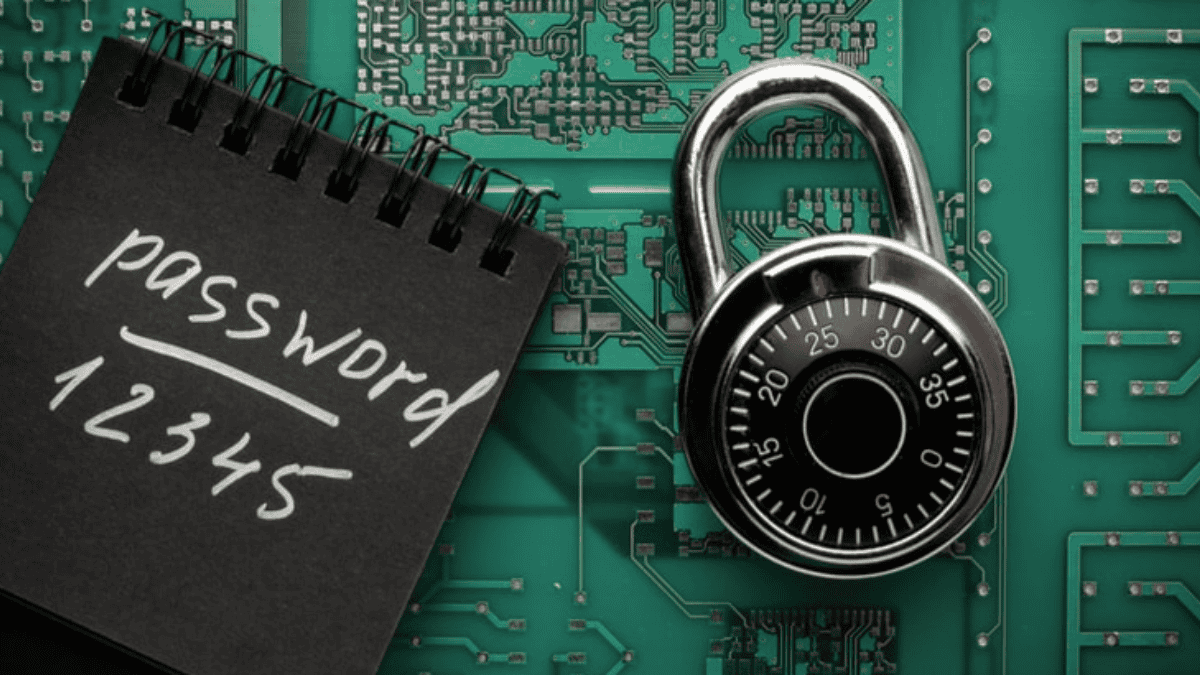Staff training plays a vital role in strengthening an organization's cybersecurity posture. By educating employees on security protocols, SMEs can significantly reduce risks associated with cyber threats. Two key areas of focus in staff training are enhancing security awareness and decreasing vulnerabilities. A common starting point in these sessions is addressing basic yet essential questions like what is IT support, helping employees understand how internal teams contribute to safeguarding systems and responding to potential threats.
Enhancing Security Awareness
Enhancing security awareness among employees is essential for creating a strong security culture within an organization. When staff members are educated about potential threats and best practices, they are less likely to fall victim to cyber attacks.
The following table illustrates the importance of security awareness training:
| Training Topic | Percentage of Employees Aware Before Training | Percentage of Employees Aware After Training |
| Phishing Risks | 45% | 85% |
| Password Management | 50% | 90% |
| Data Protection | 40% | 80% |
As shown, awareness levels significantly increase after training. This heightened awareness leads to a more informed workforce that can better identify and respond to potential security threats.
Decreasing Vulnerabilities
Decreasing vulnerabilities is another critical aspect of cybersecurity training. Employees often represent the first line of defense against cyber threats. By training staff on proper security practices, organizations can mitigate risks related to human error and negligence.
Key training areas include:
- Understanding strong password creation and management
- Recognizing suspicious emails and attachments
- Reporting unusual activities or incidents
The data demonstrates a notable decrease in vulnerability impact levels following employee training. By investing in password reset and security training, SMEs can significantly bolster their defenses against potential security breaches.
Password Reset Procedures
Implementing effective password reset procedures is essential for maintaining the security of sensitive information. Proper understanding of password policies and management practices can significantly reduce vulnerabilities in an organization.
Understanding Password Policies
Password policies establish the criteria for creating and maintaining secure passwords across the organization. These policies help employees understand the importance of strong passwords and encourage best practices. Common elements of effective password policies include:
| Policy Element | Description |
| Minimum Length | Require a minimum of 8-12 characters. |
| Complexity Requirements | Include uppercase letters, lowercase letters, numbers, and symbols. |
| Expiration Period | Set passwords to expire every 60-90 days. |
| Password History | Prevent reuse of the last 5-10 passwords. |
| Lockout Mechanism | Temporarily lock accounts after a specified number of failed login attempts. |
Clearly defining these elements, organizations can help employees create stronger passwords and reduce the likelihood of unauthorized access.
Proper Password Management
Proper password management is crucial for maintaining secure access controls. Employees should be trained on how to store and manage their passwords securely. Key practices for effective password management include:
| Management Practice | Description |
| Use of Password Managers | Encourage the use of password manager applications to securely store and generate complex passwords. |
| Regular Updates | Train staff to regularly update their passwords based on the established password policies. |
| Unique Passwords | Advise employees to create unique passwords for different accounts to minimize risk. |
| Avoiding Common Passwords | Educate staff about the dangers of using easily guessable passwords, such as "123456" or "password." |
Following these management practices, organizations can reduce the risk of password-related breaches and improve overall cybersecurity resilience.
Security Training for Employees
In today’s digital landscape, equipping employees with the skills to recognize potential threats is vital. Providing effective training on identifying phishing attempts and understanding social engineering tactics can significantly reduce the risk of security breaches.

Identifying Phishing Attempts
Phishing is a common tactic used by cybercriminals to deceive individuals into providing sensitive information. Awareness of common phishing characteristics can help employees recognize and mitigate these threats.
| Phishing Characteristic | Description |
| Suspicious Sender | Email or message appears from an unrecognized source. |
| Urgent Language | Message stresses immediate action is needed. |
| Generic Greeting | Email does not address the recipient by name. |
| Poor Spelling and Grammar | Messages contain noticeable errors. |
| Unusual Requests | Requests for personal or financial information are present. |
Training should emphasize these characteristics so employees can effectively identify potential phishing scams and report suspicious communications.
Recognizing Social Engineering Tactics
Social engineering involves manipulating individuals into divulging confidential information. Understanding the various tactics employed by attackers is essential for employees to safeguard organizational data.
| Social Engineering Tactic | Description |
| Pretexting | Attacker creates a fabricated scenario to obtain information. |
| Baiting | Offering a physical item, such as a USB drive, to entice the recipient. |
| Tailgating | Gaining physical access to a restricted area by following an authorized person. |
| Impersonation | Pretending to be someone else, like a supervisor or IT staff, to extract data. |
Employees should be trained to recognize these tactics and encouraged to verify identities before sharing any information, thus enhancing the overall security awareness in the organization.
Addressing these key areas in security training, organizations can empower their staff to become the first line of defense against cyber threats—just as having the right technical support can strengthen your infrastructure from the ground up. For more on expert assistance, check out our article "Struggling with Linux? Get Expert Server Support Now."
Implementing Multi-Factor Authentication (MFA)
Multi-Factor Authentication or MFA is a critical component in enhancing the security framework of any organization. It adds an extra layer of protection beyond just a username and password.
5 Benefits of MFA
The implementation of MFA offers several advantages for organizations.
| Benefit | Description |
| Increased Security | MFA significantly reduces the chances of unauthorized access by requiring additional verification steps. |
| Enhanced Compliance | Many regulations require MFA for sensitive data access, aiding organizations in meeting compliance standards. |
| Reduced Risk of Credential Theft | Even if passwords are compromised, MFA mitigates the risk by requiring another form of identification. |
| User Accountability | MFA makes it more challenging for individuals to share accounts, promoting responsible usage. |
| Better Protection for Remote Access | MFA is especially beneficial for remote access, safeguarding sensitive information accessed outside the organization’s premises. |
How MFA Enhances Security
MFA enhances security through various mechanisms that verify a user’s identity. It typically incorporates multiple forms of authentication, which can include:
| Authentication Factor | Description |
| What You Already Understand | A password or PIN that the user knows. This is the first line of defense. |
| A Possession You Own | A physical device or token, such as a smartphone app or hardware token, which generates a time-sensitive code. |
| A Part of You | Biometric verification methods like fingerprints, face recognition, or retina scans that identify the user based on unique physical characteristics. |
The combination of these factors forms a layered security approach. If an attacker gains access to one factor, such as a password, they still face barriers with the additional authentication requirements. Implementing MFA can reduce the risk of data breaches and protect sensitive information, aligning with the goal of password reset and security training initiatives.
Incident Response and Reporting
Timely and effective incident response is critical for protecting sensitive information from breaches. Employees should be trained on how to recognize and react to security incidents to mitigate risks.
Steps to Follow in Case of Security Breach
In the event of a security breach, employees should adhere to a specified procedure to ensure that the response is as effective as possible. The following steps outline a general approach to handling such incidents:
| Step | Action |
| 1 | Identify the Breach: Recognize the signs of a security breach, such as unusual account activity or unauthorized access. |
| 2 | Contain the Breach: Immediately isolate affected systems to prevent further damage. Disconnect from the network if necessary. |
| 3 | Notify IT Personnel: Report the incident to the designated IT support or cybersecurity team. Provide detailed information regarding the breach. |
| 4 | Assess the Damage: Evaluate the extent of the breach, identifying what information may have been compromised. |
| 5 | Document the Incident: Keep a detailed record of the breach, including timelines, actions taken, and personnel involved. |
| 6 | Follow Up: Participate in any post-incident review. Discuss findings and recommend improvements to prevent future incidents. |
Importance of Reporting Suspicious Activities
Employees play a vital role in maintaining cybersecurity by being vigilant about their activities and reporting any suspicious behavior. Prompt reporting can strengthen the organization’s defenses against potential attacks.
| Reason | Description |
| Early Detection | Quick reporting can help identify threats before they escalate into larger issues. |
| Risk Management | Understanding potential vulnerabilities enables the company to reduce risks proactively. |
| Combatting Phishing | Employees who report phishing attempts help protect the organization by allowing for timely interventions. |
| Continuous Improvement | Feedback from reported incidents aids in regularly updating security policies and training programs. |
Encouraging a culture of vigilance and awareness among employees is essential. By following proper incident response protocols and reporting suspicious activities, organizations can enhance their cybersecurity posture.
Monitoring and Evaluation
Monitoring and evaluating cybersecurity practices are vital for ensuring that staff training, password reset procedures, and security measures remain effective. SMEs must implement regular assessments and feedback mechanisms to strengthen their defenses.

Regular Security Assessments
Regular security assessments help organizations identify weaknesses in their cybersecurity framework. These evaluations can be conducted in various forms, such as penetration testing, vulnerability scans, and compliance audits. By systematically examining security protocols, organizations can ensure that their systems are resilient against cyber threats.
Feedback and Improvement Strategies
Incorporating feedback from employees and stakeholders is essential for continuous improvement in cybersecurity training and protocols. Gathering insights allows organizations to adapt their security training to address real-world challenges employees face.
LK Tech: Where Digital Becomes Human
Implementing these evaluation strategies empowers SMEs to refine their cybersecurity practices, ensuring that both password reset and security training remain comprehensive and adaptive to the ever-changing threat landscape. By regularly reviewing these systems and investing in staff awareness, organizations build a strong culture of proactive security.
At LK Tech, we provide top-notch IT support tailored to your unique needs, helping businesses stay protected and efficient every step of the way. Companies searching for dependable IT services in Cincinnati rely on our expertise and dedication to quality. Let’s strengthen your cybersecurity—contact us today to get started.


